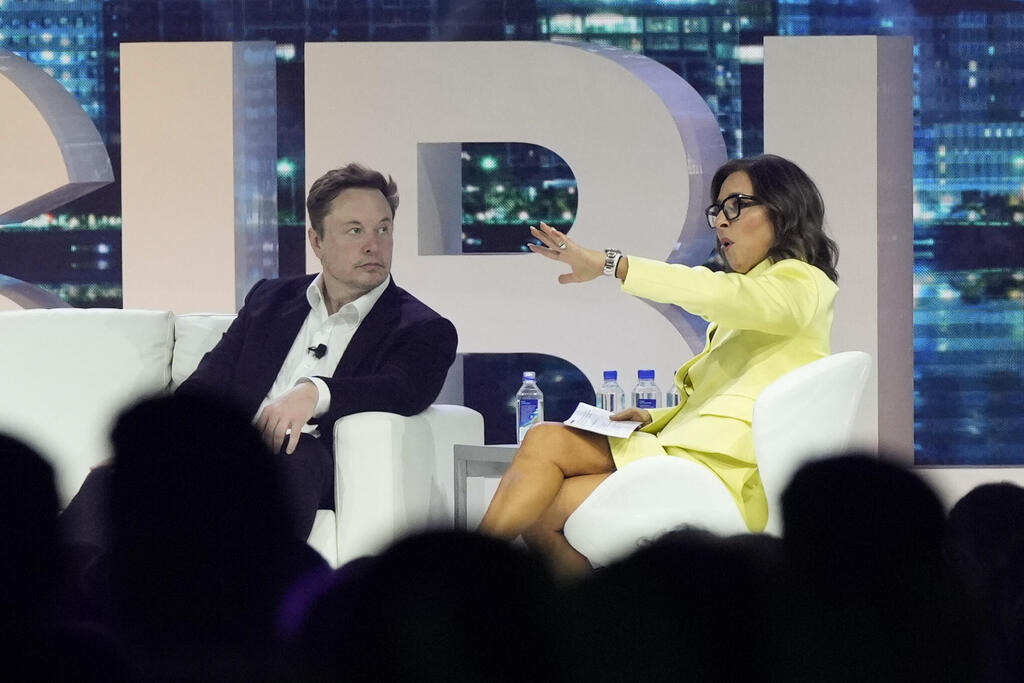
Analysis
Musk limits number of posts Twitter users can read - Shooting his new CEO in the foot
At a time when new CEO Linda Yaccarino is taking significant steps to steer Twitter back on track, Musk is undermining the very foundation on which the company is built
The cornerstone of any advertising-based online platform, particularly social networks, is to encourage users to spend as much time as possible on it. They are encouraged to write and read posts, like, comment, and share. The longer they stay and the more active they are, the more ads they are exposed to, thereby increasing the platform's revenue. It is no wonder that one of the key metrics tracked by platforms and advertisers, along with the number of active users, is the average time spent by each user on the site.
However, over the weekend, Elon Musk's Twitter broke that norm in a radical and unprecedented way for such a large social platform, raising profound questions about its underlying logic.
1 View gallery


New Twitter CEO Linda Yaccarino (left) with Elon Musk.
(Photo: AP Photo/Rebecca Blackwell)
Last night, Musk tweeted something that fundamentally changed the dynamic between Twitter and its users. From now on, unlimited post viewing is no longer possible. Subscribers to the Twitter Blue service will be able to view 6,000 tweets per day, while regular users will be limited to 600, and new users to 300 (Musk did not specify how long a user is considered "new"). Although 600 may initially sound like a large number, given the current scope of social media usage and the continuous scrolling through an endless feed, it is easy to reach this limit with moderate usage.
In fact, within hours of the restriction being imposed, many users reported reaching their viewing limit. These reports appeared even before Musk announced the limit, and were initially interpreted as an unintentional glitch on Twitter.
Other users have raised concerns about the far-reaching implications of such a limitation. For instance, it could hinder the ability of weather services to monitor severe events and extreme weather conditions, which often involve scrolling through numerous updates and warnings. One of the regional offices of the US National Weather Service tweeted, “Due to new limits on the number of tweets an account can view per day, we may be unable to see tweeted reports of severe weather and associated damage.” Meteorologist James Spann added, “This Twitter change today is a total dumpster fire. Unless something changes, this platform is now pretty much useless for those of us in the weather enterprise.”
This change has also sparked increased interest among users in alternative platforms. Rival Bluesky experienced such a surge in demand that it had to temporarily halt new user registrations while their team addresses existing performance issues.
Musk explained that the reason for this move is to address the extreme levels of data scraping and system manipulation on Twitter. Data scraping refers to the automated extraction of data from a database or website. Within the context of Twitter, data scraping can serve legitimate purposes (such as academic research analyzing tweets on specific topics) or raise concerns (such as improving a database containing personal user information for telemarketing activities).
Unusual data scraping practices were also the motivation behind another change implemented by Twitter earlier, which restricted the viewing of tweets and profile pages to non-registered users. Reports suggest that this change resulted in an unprecedented load on Twitter's servers due to the way it was implemented, potentially causing bandwidth issues on the site.
However, in the hours following the announcement of viewing restrictions, Musk's initial message about data scraping began to fade. He first jokingly suggested that people had reached their view limit because they had read all the posts about the view limit. He then retweeted a tweet from Jack Dorsey, the founder and former CEO of Twitter, which featured a picture of green grass. Later, Musk claimed, “The reason I set a “View Limit” is because we are all Twitter addicts and need to go outside. I’m doing a good deed for the world here. Also, that’s another view you just used.” In the meantime, he also promised that the limit would be increased to 8,000 posts for paying subscribers and 800 for others, and then further increased to 10,000 and 1,000, respectively.
Musk's statement expressing a desire for users to spend less time on Twitter is nothing short of astonishing. While it might have been said in jest, it is impossible to know for sure given Musk's unpredictable nature. Most importantly, it raises questions about how this move will be perceived and received by advertisers and brands. The new CEO of Twitter, Linda Yaccarino, is currently implementing a strategic plan aimed at revitalizing the company's revenue growth, which Musk himself stated had declined by 50% since he took over. A critical aspect of this plan is rebuilding advertiser trust and winning back those who have abandoned the platform.
However, any efforts to restore trust will be significantly undermined when a controlling shareholder publicly declares a desire for users to spend less time on the platform. At a time when Yaccarino is taking significant steps to steer Twitter back on track, Musk is undermining the very foundation on which the company is built. It remains unclear to what extent the new CEO was involved in this change. She has not publicly addressed it nor responded to the change on her Twitter account.
From the moment of Yaccarino's appointment, it was evident that Musk posed one of the significant challenges she would face. She may be able to formulate and execute brilliant strategic plans, but none of it matters if Musk acts as an internal disruptor. The events of the last few days serve as a perfect example of this. Just a few days after media reports on Yaccarino's strategic plan to regain advertisers' trust and bring them back to Twitter, Musk makes a move that confirms their worst fears and undermines any attempt to lure them back to the platform.
If there was any ambiguity when she assumed her role, the events on Saturday made it abundantly clear: before implementing any strategic plan or turnaround initiative, Yaccarino needs to establish who is in charge and who makes decisions on Twitter. Otherwise, all her efforts will be in vain.













